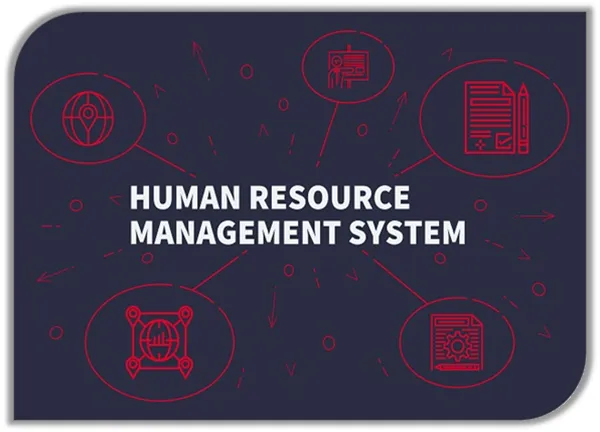
Menu

Menu

Managing your payroll is often a complicated task; therefore, it requires specialized knowledge and expertise. In fact, it’s not uncommon for errors to occur when handling payroll in-house, which can lead to significant issues down the line. Consequently, here we share the most common and costly mistakes associated with payroll processing, along with some helpful suggestions for ways that you can avoid them. By taking proactive measures, you can streamline your payroll operations and minimize the risk of errors, ultimately ensuring compliance and accuracy in your payroll management.
Payroll is an activity that requires a great deal of current and accurate understanding of regulations and processes; consequently, it is essential for organizations to maintain up-to-date knowledge in this area. However, many small to medium-sized organizations place just one resource in charge of payroll processing, which poses a significant risk. If this individual is sick, on holiday, or decides to leave the organization, it can lead to serious disruptions in payroll operations. Therefore, it is crucial for companies to implement contingency plans, such as cross-training additional staff members or utilizing payroll software, to ensure continuity and accuracy in payroll processing.

The administrative burden of processing a monthly payroll can often lead to data entry errors or, even worse, the omission of critical information. To mitigate this risk, one effective strategy is to ensure that you train several people to handle payroll processing; this approach not only distributes the workload but also allows sufficient time for them to stay updated on the latest changes in laws and regulations. Alternatively, you might consider outsourcing your payroll to an external service provider, which can offer the advantage of guaranteeing that resources are always available and adequately trained to manage your payroll efficiently.
Payroll processing depends on several employee data sources, such as core employee data, time and attendance records, and benefits and claims. However, when these sources of information exist in different IT systems, it creates a significant headache for those tasked with collating the data needed to calculate payroll accurately. Consequently, this fragmentation can lead to inefficiencies and potential errors, further complicating the payroll process.

One effective solution is to implement a Human Resource Management System (HRMS) that holds data in one central location. By doing so, an HRMS significantly decreases the payroll burden while also offering enhanced security, comprehensive audit trails, improved reporting options, and easier employee access to personal information. Consequently, this centralization not only streamlines payroll processing but also fosters greater transparency and engagement among employees.
A particularly challenging aspect of payroll processing is accurately handling salary deductions and additions, which can change every month. Consequently, keeping track of when changes are required and for whom can often lead to errors and delays. Furthermore, deductions and additions are time-bound and heavily reliant on supplementary documents or information, such as claim forms, overtime logs, and leave applications. Therefore, establishing a systematic approach to monitor these changes is essential for ensuring payroll accuracy.

Associated documents typically require checking and approvals before being processed, which, in turn, adds to the potential delay. However, an HRMS will effectively alleviate this problem, as it provides automated approval workflows that streamline the entire process. Moreover, it connects data and processes, ensuring consistency and accuracy. Additionally, the HRMS allows for pre-programmed deductions and additions based on specific dates or other criteria. As a result, it significantly enhances efficiency and reduces potential delays in payroll processing.
A core input to salaries is the employee time and attendance log. Collecting, storing, and retrieving all of this data for calculations can be a difficult task. Moreover, determining working hours has become even more challenging due to remote working and the increasing tendency for employees to engage from different locations during a given period. Therefore, implementing a reliable attendance tracking system that you can depend on to provide accurate and readily accessible data is key to simplifying this task.

It is common to see organizations utilizing a wide range of worker types to meet operational needs effectively. For instance, workers can include full-time and part-time salaried employees with benefits, as well as contract staff on various project rates. Additionally, freelancers are often compensated on hourly rates, and sometimes even vendor resources contribute to the workforce. This diverse mix allows organizations to remain flexible and responsive to changing demands.
This wide range of worker types may form part of company payrolls; consequently, each type requires different payment calculations, which can complicate the overall payroll process significantly. One effective solution, therefore, is to use an HRMS that can handle predefined worker classifications. By automating differentiated payments and any associated variations that might be needed, this system not only streamlines the payroll process but also enhances accuracy and efficiency, ultimately reducing the potential for errors and delays.

Neglecting to conduct regular payroll audits can lead to costly mistakes and compliance issues. Regular audits serve as a valuable tool for identifying discrepancies and ensuring that payroll processes adhere to current laws and regulations. Moreover, these audits can help organizations recognize patterns of errors that may otherwise go unnoticed. Therefore, it is crucial to establish a routine for conducting payroll audits, which can involve both internal reviews and external assessments. By doing so, you not only enhance the accuracy of your payroll but also reinforce your commitment to compliance and transparency.
Another common mistake in payroll processing is failing to stay informed about tax regulations, which are frequently subject to change. Consequently, organizations may inadvertently apply outdated tax rates or regulations, resulting in compliance issues and potential penalties. To avoid this, it is essential to stay updated on federal, state, and local tax regulations. Engaging with tax professionals or utilizing reliable payroll software can be beneficial in ensuring that your organization remains compliant. Ultimately, by proactively monitoring tax regulations, you can prevent costly mistakes and maintain the integrity of your payroll system.
Inadequate communication regarding payroll processes can lead to misunderstandings and dissatisfaction among employees. For example, employees may be unaware of how their pay is calculated, what deductions are taken, or how to access their pay stubs. Therefore, fostering clear and open communication is essential. Providing training sessions, resources, or FAQs can help employees understand the payroll process better. Additionally, encouraging employees to ask questions can further enhance their understanding and alleviate concerns. Consequently, improved communication contributes to a more engaged and informed workforce, which can positively impact overall morale.
Ignoring employee feedback on payroll processes can hinder continuous improvement efforts. Employees often have valuable insights into how payroll affects their experience with the organization. Therefore, soliciting their feedback through surveys or informal discussions can provide crucial information on potential areas for improvement. By actively listening to employee concerns and suggestions, organizations can make informed adjustments to their payroll processes. This, in turn, fosters a culture of collaboration and responsiveness, ultimately enhancing employee satisfaction and trust in the organization.
Finally, underestimating the importance of data security in payroll processing can have dire consequences. Payroll systems contain sensitive employee information, including Social Security numbers, bank account details, and salary data. Consequently, it is vital to implement robust security measures to protect this information from unauthorized access and data breaches. Regularly updating security protocols, conducting employee training on data protection practices, and utilizing secure payroll software are all effective strategies. By prioritizing data security, organizations can safeguard employee information and maintain compliance with regulations, thereby building trust with their workforce.
One of the most critical aspects of payroll processing, without a doubt, is ensuring compliance with wage laws. These regulations often vary across regions and industries, making it easy to overlook key details. As a result, companies may face significant penalties, legal disputes, and even damage to their reputation. Furthermore, wage laws cover a wide range of areas, including overtime pay, minimum wage, and holiday pay, all of which are subject to frequent updates. Therefore, it is essential to keep track of these evolving regulations. Implementing a reliable payroll system that is continuously updated to reflect changes in wage laws can, without a doubt, help you avoid costly mistakes. Moreover, consulting legal professionals whenever new laws come into effect can further ensure that your payroll practices remain compliant with current standards.
Another common payroll mistake, which is often overlooked, is the misclassification of employees. This issue can lead to significant compliance problems as well as incorrect compensation. For example, improperly classifying a full-time employee as an independent contractor could result in unpaid taxes, fines, and serious employee dissatisfaction. Therefore, it is crucial to fully understand the differences between full-time, part-time, contract workers, and freelancers. A well-implemented system that helps accurately classify workers based on their role and employment type can, consequently, minimize these risks. In addition to this, conducting regular reviews of employee status can help ensure compliance with labor laws and guarantee that every worker receives the correct compensation for their efforts.
Overtime pay, quite often, can be a tricky area for payroll processing, especially when employees work variable hours or take on different shifts. Overcomplicating overtime calculations, however, frequently leads to errors in payment, which can frustrate employees and create legal challenges. To prevent these issues, simplifying the way you calculate overtime is absolutely crucial. Utilizing payroll software that automatically calculates overtime based on employee schedules and applicable labor laws can significantly reduce errors. Furthermore, it is equally important to clearly communicate overtime policies to employees, ensuring they fully understand how their overtime is calculated and what entitlements they have.
Delaying payroll adjustments, unfortunately, can create unnecessary frustration for both employees and payroll administrators. For instance, if an employee has submitted changes to their tax withholding or updated their bank details, any delay in processing these adjustments can easily result in problems, such as incorrect payments or taxes. Therefore, it is essential to implement a streamlined process that allows for timely payroll adjustments. By utilizing automated workflows within a payroll system, you can ensure that changes are processed efficiently and accurately. Additionally, maintaining clear communication with employees about when and how to submit payroll adjustments can prevent misunderstandings, making the entire payroll process smoother.
Properly archiving payroll data is, without a doubt, not only a best practice but also a legal requirement in many jurisdictions. Failing to maintain organized payroll records can cause difficulties during audits and, in addition, lead to potential fines for non-compliance. Furthermore, payroll records often need to be kept for several years, depending on local legal requirements. Therefore, it is essential to establish a secure and organized system for archiving this data. Digital payroll software, for instance, can securely store historical payroll data while providing easy access for audits. Additionally, regularly reviewing and updating your payroll archive protocols ensures that all necessary documents are up to date and compliant.
In summary, you can alleviate the worry and headache of payroll processing by implementing a central HRMS or outsourcing the responsibility to an external service provider who will take care of all of these issues on your behalf.
Why not take a look at how our HRBluSky HRMS can help you eradicate these common and costly errors and make your payroll simpler to administer.
Alignment
Article
Audit
Automation
Benefits
Candidate
Communication
Compliance
Digitalisation
Digital Technology
Diversity
Emirates Id Application
Employee Experience
ESS
Feedback
Health and Safety
HRMS
HR Strategy
HR System UAE
Human Resource Management
Human Resource Management Systems
Job Roles
Learning and Development
Onboarding
Outsource
Payroll
Payroll Management System
Payroll Processing
Performance
Performance Management
Personalisation
Recruit
Recruiting
Recruitment
Remote Working
Rewards
Security
Service Providers
Skills
Smart
Survey
Virtual
Visa Cancellation
Work Environment
Workforce
© 2025 Pruvity HR Solutions Pvt Ltd, Madurai, India
WhatsApp us